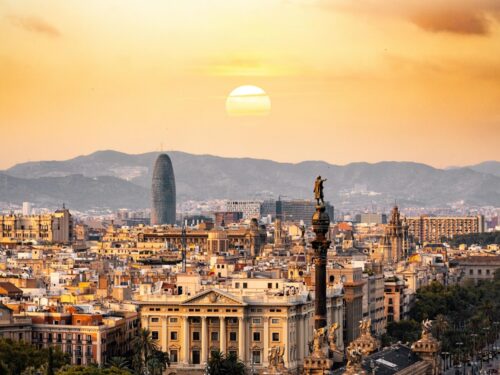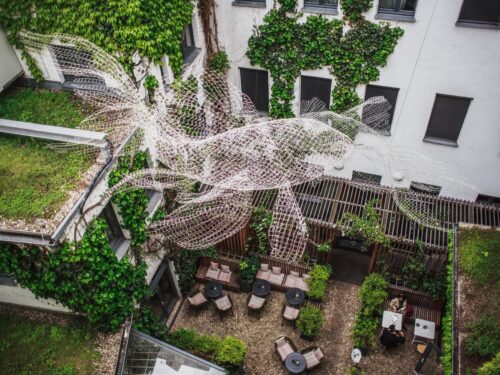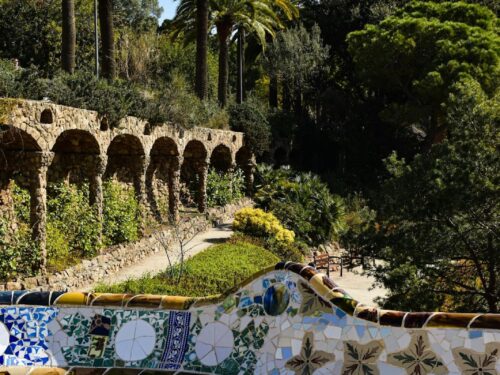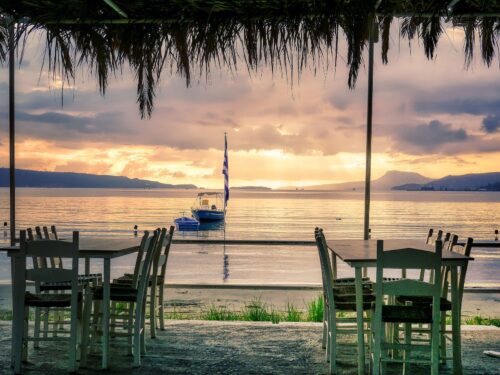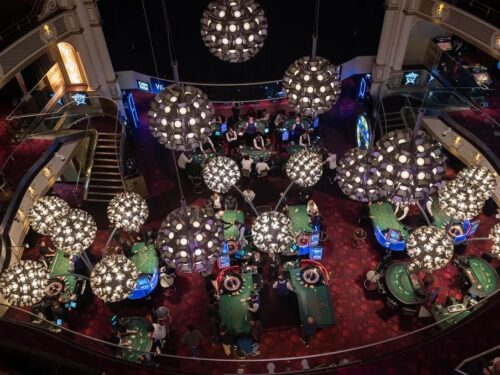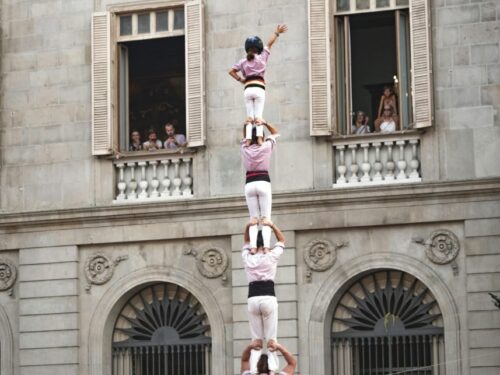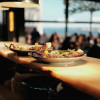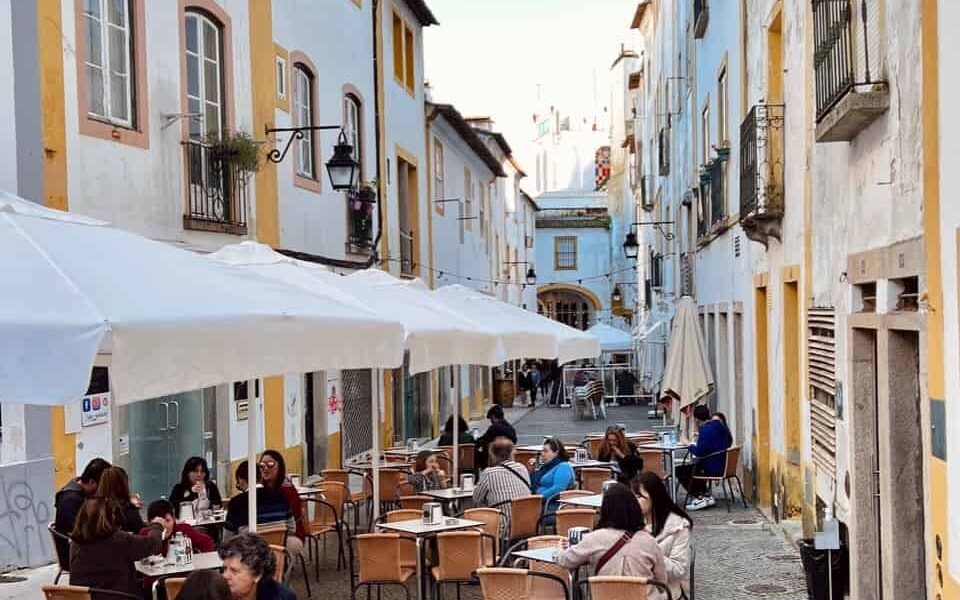
A day trip to Évora, Portugal is one of the most popular day trips you can take from nearby Lisbon. That’s one of the great things about visiting Lisbon.
Lisbon is not only amazing by itself, but as Portugal’s capital city, it’s very well-connected to much of the country by public transportation. Consequently, taking a variety of day trips from Lisbon is very easy (check out our guide to visiting Sintra as a day trip from Lisbon). Especially for those of us who prefer to avoid the rising costs of car rental when we travel.
Évora is a must-visit. The entire historic center of this ancient city, located just 80 miles east of Lisbon, is a UNESCO World Heritage Site. Let me show you some of what’s great about this magical place, and how to best take your own day trip to Évora.
Here’s a summary of what to expect:
The finest example of a Portuguese historical city
Évora is one of the oldest cities in Portugal, getting its start sometime in the second millennium BC. It was founded by the Celts, ruled by the Romans, conquered by the Moors, and ultimately wrested away by the Portuguese. It became a favored residence of Portuguese royalty during Portugal’s Age of Discovery in the 15th and 16th centuries.
Évora was spared by the earthquake that destroyed much of Lisbon in 1755. So it’s architecture, general city layout, and monuments are considered “the finest example of a city of the golden age of Portugal”. This is a major reason it received its UNESCO designation.
The city’s historic center is encircled by an ancient wall and is quaint, walkable, and absolutely begs to be visited on a day trip.

Options for getting to Évora from Lisbon
When taking a day trip to Évora from Lisbon, you have two public transportation options: Bus or Train. Both take about 1.5 hours each way.
For me personally, 3 hours of round trip travel is the maximum amount of time that I’ll accept for any day trip. Anything above that will usually push me towards an overnight stay. I never want to cut myself short and miss out on great sites by spending too much of the day traveling. So Évora is indeed a reasonable day trip destination from Lisbon – just barely.
I chose the bus for our day trip to Évora. I did this for two reasons: schedule flexibility and station proximity. Many more buses than trains leave from Lisbon for Évora each day. In fact, there is only one train from Lisbon during the morning hours – at around 10am. But, you have the choice of 5 different bus departure times spread throughout the morning hours.

And likewise, there are only two end of day returns by train – one in the late afternoon and another in the early evening. But again, there is a wide range of departure times by bus, including later evening returns if you want to maximize your time in Évora.
Furthermore, the bus station sits just outside the city wall, and is only a 10 minute walk to Évora’s central square. The train station is a little further from the town center – a 20 minute walk. (When on a day trip, minutes and walking distances count!)
Whichever way you chose to get to Évora, arranging your transportation is easy. You can find schedules online, where you can also purchase your tickets and download them directly to your phone.
Here’s the train website, and here’s the bus website.
If you’d prefer not to organize everything yourself, you could always join an organized day tour to Evora from Lisbon – like this one. This tour includes Évora and Almendres Cromlech visiting all the top historical sites. Or, opt for a wine tour to explore the city and learn about delicious local wines in an included tasting.
Riding the bus to Évora
All the morning buses to Évora leave from the Sete Rios bus station located in north Lisbon. This large bus station is easy to reach by subway (a connecting station is on the blue line) or by Uber (very cheap in Lisbon).
The buses are modern and comfortable. And as long as a bus is comfy, it’s a great way to sit back, relax, and observe the countryside passing by.

The ride to Évora took us south, across Lisbon’s 25 de Abril suspension bridge, before turning east through quiet countryside and past smaller towns before ultimately reaching Évora.
On our return, we came back by a slightly different route and crossed the long Vasco da Gama Bridge instead. This is the second longest bridge in Europe and crosses the wide Tagus Estuary.
Things to see on your day trip To Évora
Once we arrived in Évora, we had 6 hours to explore the town (and eat lunch) before our scheduled return. Was that enough time? I think so. We didn’t see everything that Évora has to offer, but we did see most of it’s best sites.
Here’s a look at what we did:
Chapel of Bones
This chapel – called the Capela dos Ossos in Portuguese – is a small interior chapel of the larger Church of St Francis. This was my favorite site during our day trip to Évora. It was built by Franciscan monks in the 16th century using bones gathered from the city’s graveyards. The walls of the chapel are made from stacks of those bones and skulls, and the supporting pillars also feature inlayed skeletal remains as well.

Entering this chapel is quite a stunning and unforgettable sight. And that was certainly the monk’s intent. They wanted to remind everyone of their own mortality. In fact, the Portuguese inscription above the entrance to the chapel translates to: “We, the bones that are here, await yours.”

We paid a small admission fee to enter the chapel, and the entrance is separate from that of the main church. The entrance fee includes two other floors within the church complex, a museum of holy relics, and a large private collection of nativity scenes from around the world. These are worth a look, but definitely pale in comparison to the Capela dos Ossos.
The Roman Temple of Évora
As I mentioned above, Évora was once ruled by the Roman Empire and was, in fact, one of the most important Roman cities in the region. In the first century, the Romans built a temple here. It was built to honor the Roman emperor Augustus, and is now considered one of the most important Roman ruins in all of Portugal.

And it’s definitely worth a visit. It’s centrally located and basically unmissable. But it’s a small temple…and we had visited Athens just 4 months prior. So for us, it was just OK. I mean, the Parthenon was still very much in our recent memory. Still, any time you can see ancient temple ruins, it’s a good day.
Cathedral of Évora
Not far from the temple sits the Cathedral of Évora. This is the largest medieval cathedral in all of Portugal and one of the oldest too – initial construction started in the 13th century.

While the inside of the Cathedral is impressive, my favorite part of our visit was the roof. For only a few Euros, you can climb the stairs and have full access to the top of this grand building. And not only are the bell towers impressive from on top, but the views out across all of Évora and surrounding countryside are definitely a big part of the experience.

Praça do Giraldo
The Praça do Giraldo is the main town square of Evora, and it certainly seemed to be the center of the town’s activity. It’s filled with open air cafes, surrounded by shops, and dotted with other vendors. We found it to be bustling with local families out for the day (we visited on a Sunday).

In the center of the square sits the Fonte Henriquina – a large water fountain with 8 streams, each representing the eight streets that lead from the Praça.

The square hasn’t always been a pleasant place to hang out. In the 16th and 17th century, it was the regional execution ground for the Spanish Inquisition. And in the 1400s, the Portuguese King beheaded his traitorous brother-in-law in this infamous square.
But, we didn’t focus on that dark history while on our day trip to Évora. Now, it’s just a nice place to enjoy a treat.

The streets of Évora
Évora is very walkable and picturesque town. Part of its UNESCO designation has to do with its classic medieval layout and overall architecture. Narrow alleys, white-washed houses, cobble-stone streets, small courtyards, hidden squares. It’s the perfect place to just wander and explore. And we did plenty of that.



Évora Cemetery
You won’t find this on many things to do in Evora lists, but after leaving town and on the way back to the bus station, we made it a point to visit Évora’s largest cemetery. It sits right next to the bus station, in fact. We love to visit cemeteries wherever we travel. We find it so interesting to observe how different cultures honor their dead.

And the Évora cemetery is very picturesque. Large above-ground marble vaults, tree-lined walkways. We were the only ones there. It’s well worth a visit.
Eating in Évora
For me personally, travel is not only seeing sites, but also sampling great cuisine. And so, eating a typical local lunch is always on all my day trip itineraries. Évora is considered the historic capital of Portugal’s large Alentejo region. This large rural and agricultural region is often referred to as Portugal’s breadbasket and has its own unique cuisine.
While on a day trip to Évora, you will not have any difficulty finding a place to eat Alentejo food. Side streets are filled with good restaurants offering outdoor dining. We opted for interior courtyard dining at a restaurant called Páteo.

Here, I ate grilled Black Iberian Pork tenderloin. Dishes featuring Black Pork (Porco Preto) are very prominent in Alentejo cuisine and easy to find in Évora. This is the same species of pig that famed Iberian ham comes from. Acorn-fed, and not only raised in Spain where this ham is most celebrated, these pigs are also raised throughout Portugal’s Alentejo region too. And while the ham from this species is always amazing, the tenderloin is delicious too, especially when grilled.

Another dish you could try in Évora is an Alentejo favorite that’s actually named after the region – Porco à Alentejana. It consists of cubed pork, clams, fried potatoes, paprika, and coriander. Since this dish is popular throughout Portugal, and because I didn’t have enough time for a second meal in Évora, I was able to try it at a restaurant called Hífen in the seaside city of Cascais.

Final thoughts
Clearly, there is plenty to see…and eat…in Évora. And I personally felt that we saw enough during our 6 hours there. But it’s also the type of place where you could easily spend a few days just soaking it all in. Plus Évora is well known for its museums – none of which we had the opportunity to visit. So if you have time in your schedule, definitely consider spending a night or two as an alternative to an over-and-back day trip to Évora.
And the surrounding countryside has plenty to offer as well. Things like taking wine tours (Alentejo is one of Portugal’s largest wine producing regions), hiking along an ancient aqueduct, or visiting a Megalithic site. Local tour companies can certainly help you visit these sites.
Regardless of how much time you spend in Évora, I’m sure you will love it as much as we did!
And if you want to learn about another easy and essential day trip from Lisbon, then check out this post:

